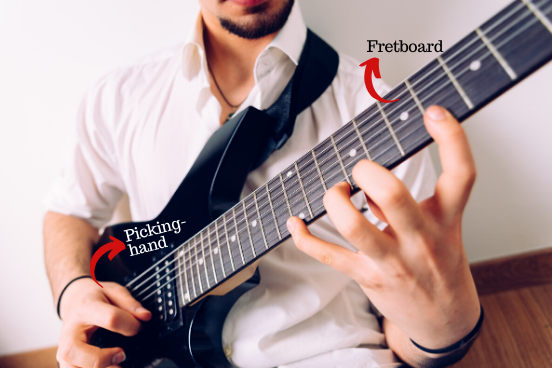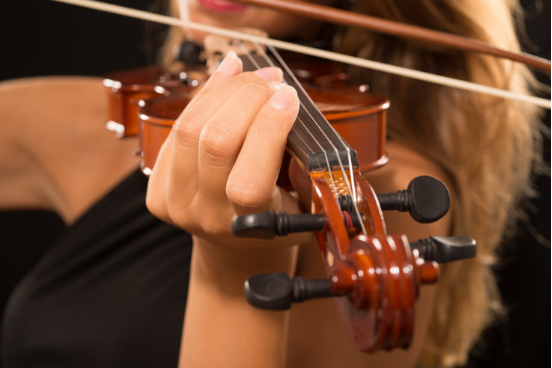What You Should Know While Learning To Play A Musical Instrument
Its sleek look spellbinds you and its rhythm even more. You’d wish to play it perfectly the moment you get your hands on that intriguing instrument that produces the best sound when played. If only it were that easy. Sometimes musical instruments at window-shops call out to you. Any particular one that has appealed to you the most – a saxophone, guitar, tabla, sitar, a drum set, or a ukulele? Either way, you should know what it takes to perfect your skills in music.

Learning to play a musical instrument has its benefits. Mastering this form of art will stretch you beyond your limits. It requires dedication and discipline during your initial years of training. Music is therefore considered to be one of the most rewarding experiences. Its journey of learning requires perseverance and hard work with no room for shortcuts. You would have to dedicate at least an hour every day to learn to play an instrument. There are also a few ground rules to follow.
Choose an instrument that is right for you
Obvious but true. More often than not, inspiration comes from what someone else is playing. The melody captures your interest and so you want to learn too. This being said, once you’re inspired, you need to decide whether that instrument is really what you want to play. So, here’s how you select one.
Do not take up a violin or a drum just because you saw someone play it impeccably and it looks cool. Take up what you feel suits you, an instrument for which you’ve developed an interest. Hold the instrument, experience the feel and understand its features by gaining professional insights and advice. Most people choose the piano because it provides a foundation in music theory. Regardless of what you decide to pick up, learning to play an instrument involves hard work and dedication. It will require daily practice and patience to develop the skills for playing that musical instrument, be it a guitar, piano, drums, or violin.
An instrument’s size
Since the size of the instrument is based on your height, you should select one that matches your body size. You should be able to hold it while leaning over, sitting or standing depending on the type of instrument.
For instance, when you plan to buy a guitar, it is important to check if you are comfortable holding it. This would be your deciding factor because your comfort level will be directly related to your body size.
An instrument may look aesthetically beautiful and might be an attention grabber but you may find it to be too heavy or too broad or too small for your arms. So, picking an instrument that is in the right proportion to your body size is what makes a difference.
Learn for the right reasons
If you want to learn because everyone around you seems to be hitting musical notes, then stop right there! Playing an instrument requires practicing daily and that involves hard work and dedication. So, take up this form of art if you truly wish to learn and enjoy the fruits of your labor to produce good music. Otherwise, you’d be wasting your time and possibly your tutor’s as well.

Even if you learn how to play an instrument online or enroll with a private tutor; either way, you will reap its benefits.
Be patient
Learning to play an instrument involves daily practice. You need to invest your time and efforts to perfect your skills in music, something that won’t happen overnight. You most definitely will experience the strain of getting the notes right but you can overcome this through daily practice. Patience and perseverance are necessary. Quitting because you think you aren’t good will only make you feel unaccomplished. Begin with a positive attitude along with consistent practice. Over time you will see an improvement. Trust the process and go with the flow through dedication and hard work.
Learn the rules
Music is a language in itself, taking you from sharp to flat tones and notes. Like any other language, it has its own set of rules that are necessary to follow.

For instance, while playing a stringed instrument, such as a guitar, violin or the cello, you need to apply the right pressure on the strings with your fingers to get a clean and rhythmic sound when you strum each string. For this, you need to regularly clip your fingernails, especially of the hand that is used for the fretboard (see image below).

Make it a point to practice regularly without fail. This will result in your fingers developing a thicker layer of skin, making them strong enough to endure the pressure you apply on the strings with one hand while you strum using the other.

Similarly, holding the violin requires you to tilt your head while placing the instrument between your chin and neck. This can sometimes lead to some bruising on the neck or even a slight change in your posture.
It is, therefore, necessary to have the right posture. If you do it incorrectly, you might have a hard time playing and you will hurt your neck.
Practice, consistency, perseverance
‘Practice makes perfect’ but we’d like to add that consistency and perseverance are essential ingredients for perfection. Learning music is like mastering any other skill. Lack of consistency will affect progress and confidence. So, this will take commitment and preparation on your part. Be mentally prepared for the hard work that follows but always remember to have fun while you do.
Some learn how to play an instrument online or take up free video tutorials. Which do you prefer? Is there an instrument that you would love to learn to play but haven’t got around to it yet? Tell us about it in the comment section so we could help you with a learning option to get started.